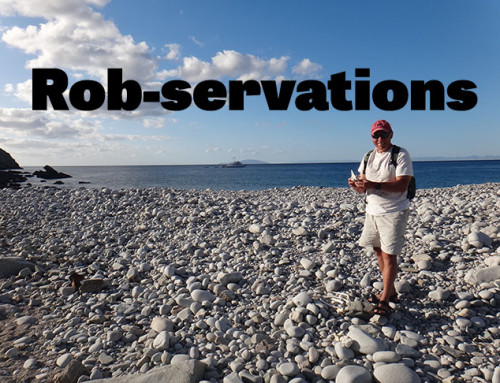by Rob Nawojchik
When viewing cetaceans (whales and dolphins) in the wild our initial sighting is most typically from quite a distance, perhaps miles away. Even at such distances, there are characteristic clues we use to identify species. As we get closer different identification clues become evident. Environmental factors such as wind, waves, overcast, time of day, position of the sun, and other variables play a role in how well we are able to observe field characteristics of whales and dolphins. Thus our ability to identify a cetacean will be dependent on our flexibility in using all the information available, and processing different information as distances and environmental conditions change.
Illustrations in field guides usually depict the entire animal, with all the diagnostic features in full view. In the wild, however, we almost never get to see the whole animal. So we rely on certain key features: blow size and shape; size of animal; color; dorsal fin size, shape, and placement; tail fluke shape and color; other species-specific color patterns and/or anatomical features; and behavior. These features are dependent on how far away the animal is from us, and how well we can see those features.
We’ll begin by highlighting the baleen whales. Cetaceans are divided between the baleen whales (mysticetes) and the toothed whales (odontocetes). The baleen whales do not have teeth, but rather have a brush-like structure (baleen) hanging down from their upper jaws. This anatomical feature is composed of overlapping plates that form a sieve for filtering water out of the whale’s mouth when feeding. In Baja we rarely get good looks at the baleen because much feeding activity occurs elsewhere.
If we can’t usually see the baleen, how do we know we’re looking at a baleen whale? A second diagnostic trait separating mysticetes from odontocetes is the number of blowholes: two in mysticetes and one in odontocetes. If we’re lucky to get close enough to a cetacean, we can see the blowhole. When we’re visiting the gray whales at Laguna San Ignacio we get VERY close to the blowhole, sometimes inches away. Many a passenger has ended up with a face-full of whale breath. I’m not sure how many people take note of the double-blowhole during the exhilaration (and exhalation!) of a gray whale close encounter.
Similarly it can sometimes be hard to detect the single blowhole on a dolphin as a herd of hundreds of common dolphins surround the boat. Fortunately many dolphins like to body surf on the pressure wave of the bow of the Searcher (this behavior is called “bow-riding”). When bow-riding, dolphins are close enough to easily see their blowhole.
Our ability to identify whale species will be aided by knowing which species occur in the area and which do not. Of the 14 species of baleen whales worldwide, we typically see six during our Baja trips: blue, fin, Bryde’s, minke, humpback, and gray. Also by knowing life history information of these whales specific to Baja, we can anticipate certain species in certain areas. For example if we are in Laguna San Ignacio, then we are looking at gray whales. If we are at the Gorda Banks (offshore Cabo San Lucas), then most of the whales are humpbacks.
In upcoming blogs we will examine the various whale species and compare field characteristics to help identify them.







